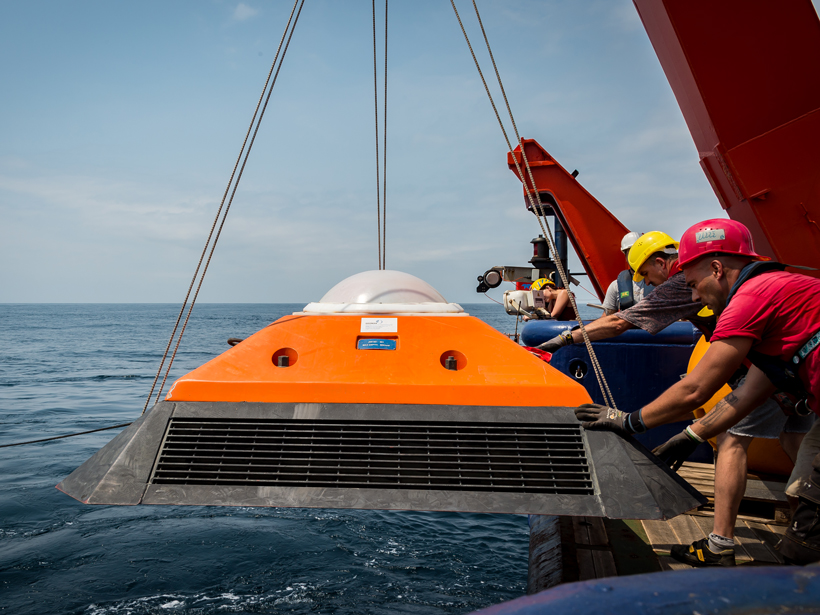Source: Journal of Geophysical Research: Oceans
The Angola Current transports warm, tropical waters off the west coast of southern Africa, affecting coastal weather, marine life, and nearby fisheries. Despite its regional importance, this current has been sparsely studied. In a new paper, Kopte et al. present the first detailed assessment of the Angola Current’s flow.
From July 2013 to October 2015, the researchers collected data on the speed of the current using moored instruments placed at various depths at a latitude of 11°S off the Angolan coast. These data revealed water flows of up to 40 centimeters per second. Contrary to historical assumptions that the Angola Current flows steadily southward, the flow direction periodically changed from south to north within and between seasons. Overall, however, the current flowed southward at an average of 5–8 centimeters per second.
The scientists also analyzed temperature and salinity data collected during recent and historic ship surveys, along with data they collected using a Slocum Glider. Each year, the data captured upwelling of cold water in August and downwelling in March, as well as hints of a secondary downwelling period in December and January. Because of seasonal river outflow and rainfall variability, surface waters experienced higher variability in salinity, whereas salinity and temperature in deeper waters showed only weak seasonal and yearly variation.
The team then used these new measurements to evaluate existing ocean models. The researchers found that these models tend to show an average southward transport comparable to the transport estimate derived from the new data. However, they found model discrepancies in the characteristics of the current that vary by season. A more detailed assessment of the causes of these discrepancies could help explain why climate simulations are known to overestimate the region’s sea surface temperatures.
By transporting warm waters southward, the Angola Current plays a major role in causing occasional severe warm events known as Benguela Niños, which bear similarities to the El Niño phenomenon in the Pacific Ocean. In addition to improved climate models, the new Angola Current data could contribute to our understanding of these major weather events. (Journal of Geophysical Research: Oceans, https://doi.org/10.1002/2016JC012374, 2017)
—Sarah Stanley, Freelance Writer
Citation:
Stanley, S. (2017), First detailed study of circulation off Angola, Eos, 98, https://doi.org/10.1029/2017EO073361. Published on 18 May 2017.
Text © 2017. The authors. CC BY-NC-ND 3.0
Except where otherwise noted, images are subject to copyright. Any reuse without express permission from the copyright owner is prohibited.

